10 – 13 April, 2025. JRC2025
Dr. Noriyuki Kadoya, Dr. Yoshiyuki Katsuta, Shohei Tanaka, Taichi Hshino, Hiakru Nemoto, Mariko Umeda, Wingyi Lee, Syuta Ogawa, Ryota Tozuka, Shinichi Tanaka, Senri Hayashi, Zhangzhou Jie, Takeru Nemoto, Yoshiyuki Takahashi, Seiya Koga, Hikaru Tanno, Koki Nakajo participated in JRC2025.
- Date:10 – 13 April, 2025
- Venue:PACIFICO Yokohama, Kanagawa, Japan
- Conference name:JRC2025
Takeru Nemoto (M2)
This conference was organized by the Japan Radiology Congress (JRC) and held as JRC2025, a joint event that included the 84th Annual Meeting of the Japan Radiological Society (JRS), the 81st Annual Meeting of the Japanese Society of Radiological Technology (JSRT), and the 129th Scientific Meeting of the Japan Society of Medical Physics (JSMP).
The overarching theme of JRC2025 was “Radiology for Everyone,” focusing on shaping the future of radiological medicine to enhance human well-being. This theme embraced concepts such as a “return to the fundamentals of radiological medicine” and “addressing challenges in community healthcare.”
The JSMP meeting I attended adopted “Society 5.0” as its sub-theme, reflecting a commitment to contributing to society (especially in the field of radiological medicine) through the development of emerging technologies. The conference programs and research presentations were aligned with three main pillars: (1) strengthening seed research and matching it with needs-driven studies, (2) expanding the scope of research and critical thinking, and (3) enhancing the role of medical physicists.
I delivered an oral presentation titled “Evaluation of AI automated plans for different treatment planning policies of the VMAT for advanced lung cancer.”
As it was my first oral presentation, I was quite nervous and anxious, but I managed to complete it successfully. Throughout the preparation process—from designing the slides to refining how I presented—I gained valuable insights, particularly on how to effectively communicate my research in a way that others can understand.
During the Q&A session, there were moments when I struggled to respond to unexpected questions. However, the experience helped me realize the importance of being able to propose possible interpretations or future directions based on my own research, even if I cannot provide definitive answers on topics I haven’t directly studied.
In addition to myself, three other students from our lab—Lee, Tanaka, and Takahashi—also gave oral presentations. Each of them confidently presented their research, and I’m sure they gained new perspectives through the Q&A sessions and by engaging with other presenters afterward. Watching my peers present so admirably made me feel proud to be part of the same team, and it strengthened my own determination to approach my research with even greater sincerity.
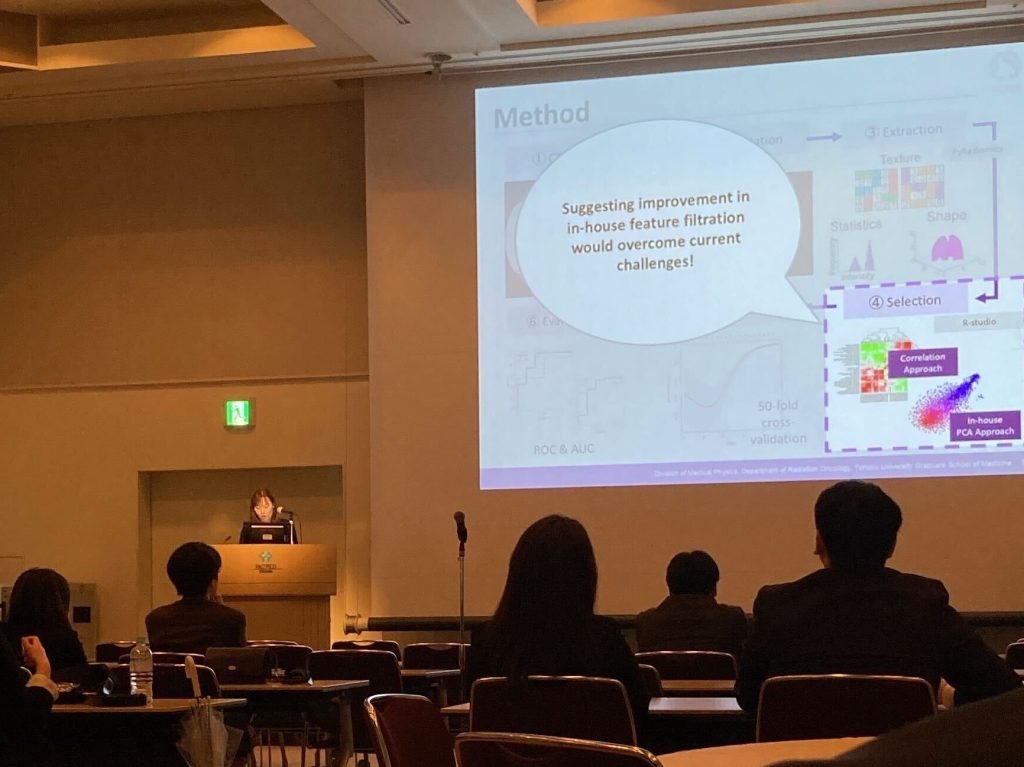
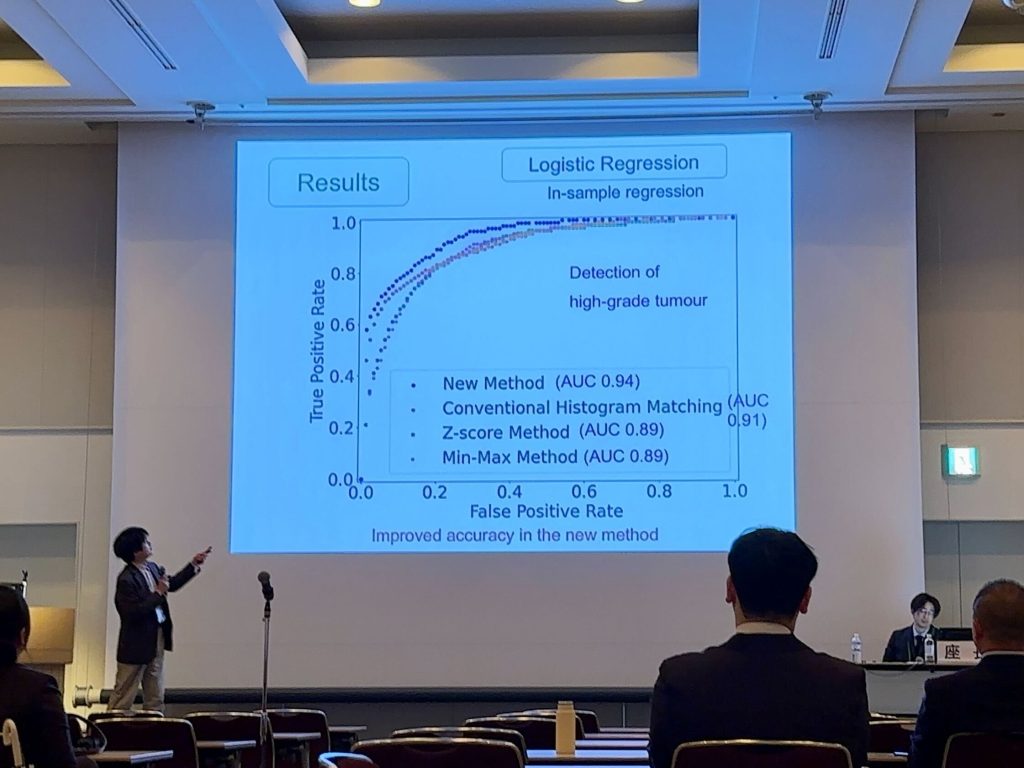
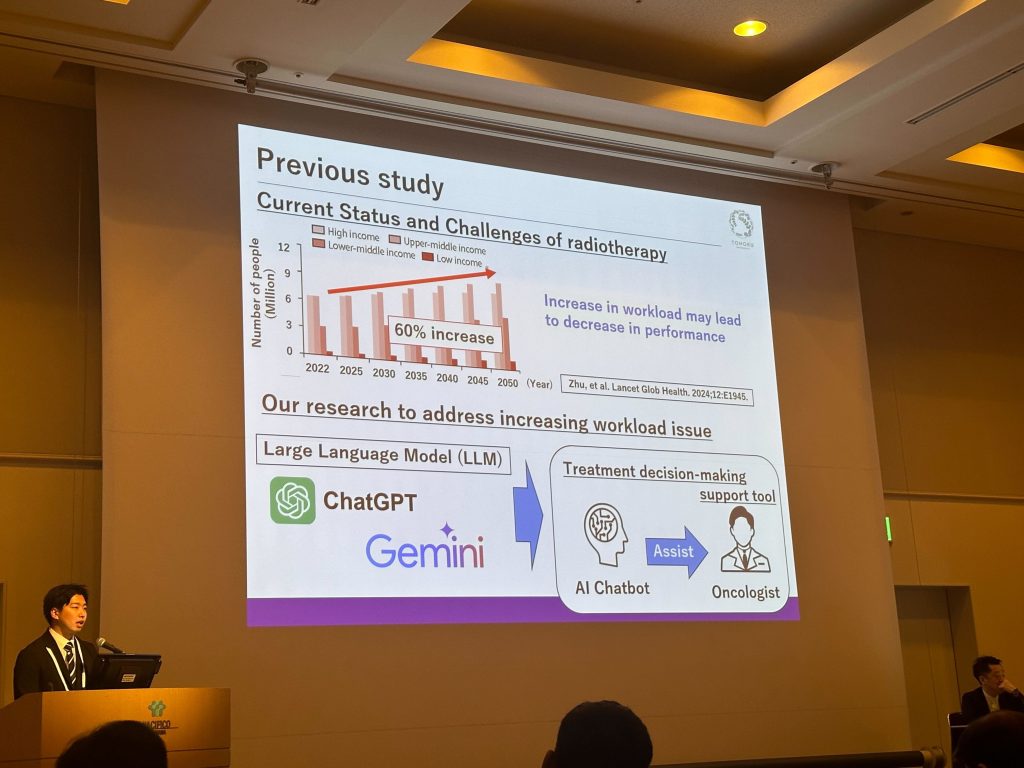
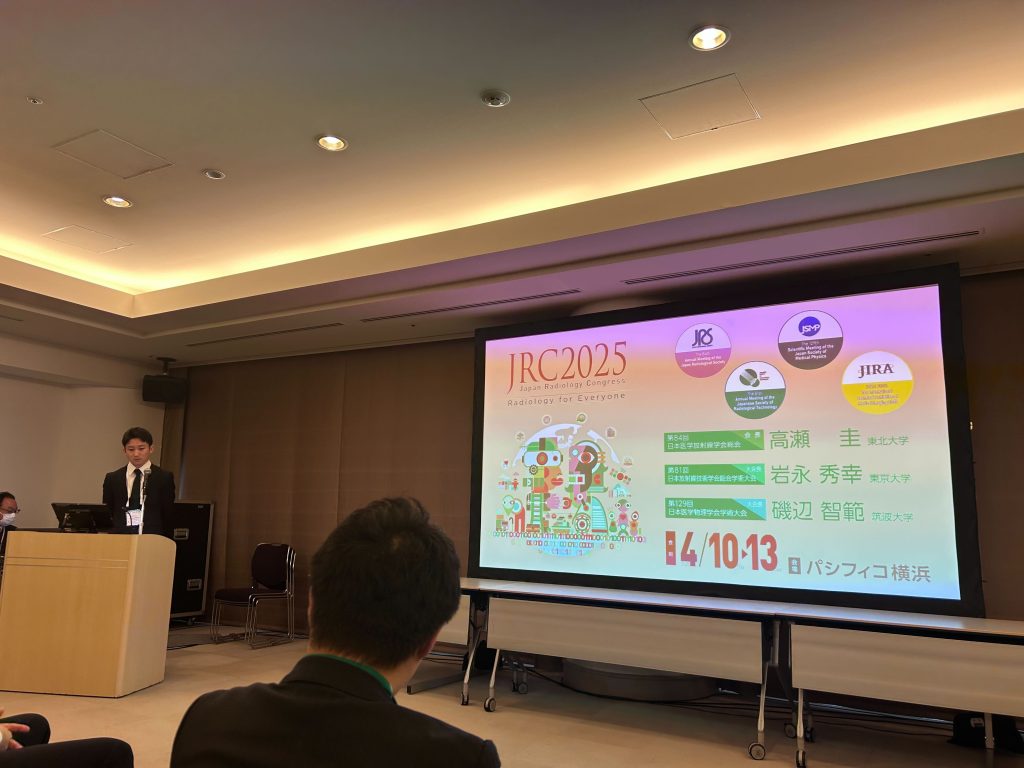
I also participated in a special JSMP session titled “The 3rd Next-Generation Discussion on Medical Physics by Young Researchers.” This year saw the largest number of participants to date, creating a lively and energetic atmosphere. Attendees were divided into ten groups and had the opportunity to engage with practicing medical physicists as well as students from other universities aspiring to enter the field. Through these discussions, we exchanged opinions on topics such as the role of medical physicists and what is important for them to consider when conducting research.
In my group, the discussion focused on the fact that, since the medical physicist is not currently a nationally licensed profession in Japan, their position within the clinical setting can be somewhat ambiguous. Nevertheless, they play a crucial role in bridging the gap between physicians and radiological technologists. We discussed the importance of proactively offering insights from a medical physics perspective—for example, how the requests or ideas from physicians and technologists can be realized, what conditions are required for implementation, and what potential risks might be involved.
This discussion provided a valuable opportunity to reflect on how we, as future medical physicists, should engage in clinical practice and contribute to the healthcare field.
↓ Young Researchers’ Association of Medical Physics ↓
http://igakubutsuri-wakate.kenkyuukai.jp/special/?id=29009
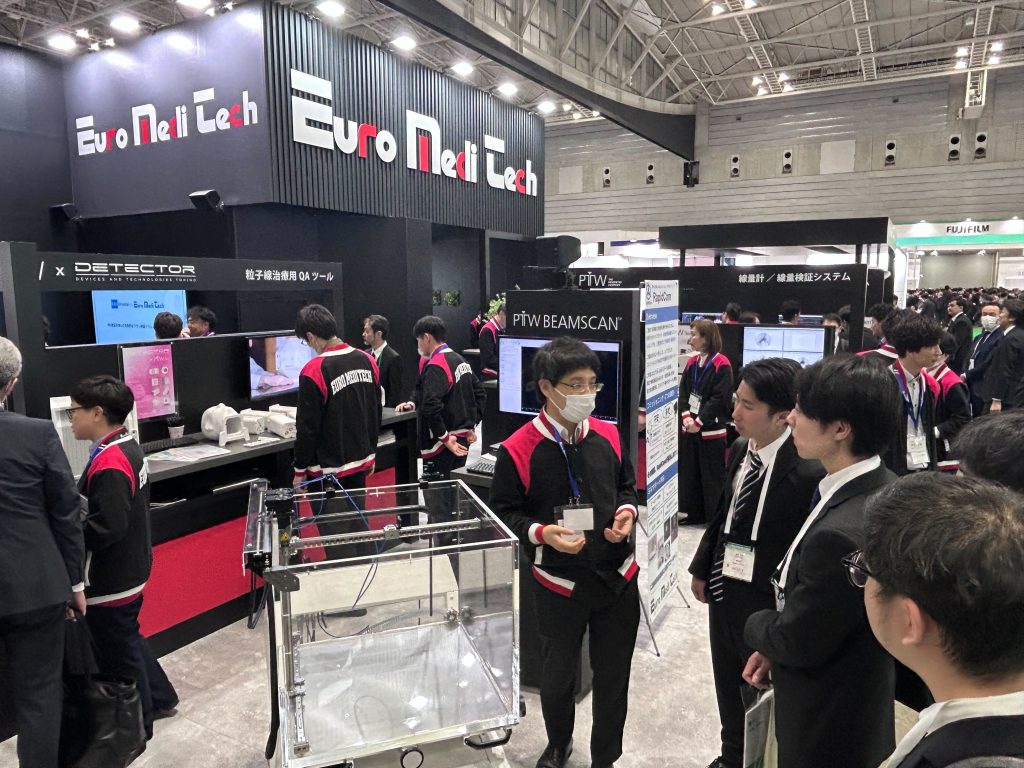
During the conference period, the 2025 International Technical Exhibition of Medical Imaging (ITEM2025) was held at the PACIFICO Yokohama Exhibition Hall, with over 100 companies showcasing their products.
It was a valuable opportunity to see the latest and most advanced medical imaging equipment firsthand. I was also able to receive detailed explanations about devices currently in use at Tohoku University Hospital, which made the experience all the more meaningful.
We also held a Social gathering with graduate students from Fujita Health University, Komazawa University, Tokyo Metropolitan University, Hiroshima University, Teikyo University, and Kyoto University.
In a relaxed and friendly atmosphere, we were able to share our research interests and discuss our future goals. It was a truly meaningful and rewarding experience.
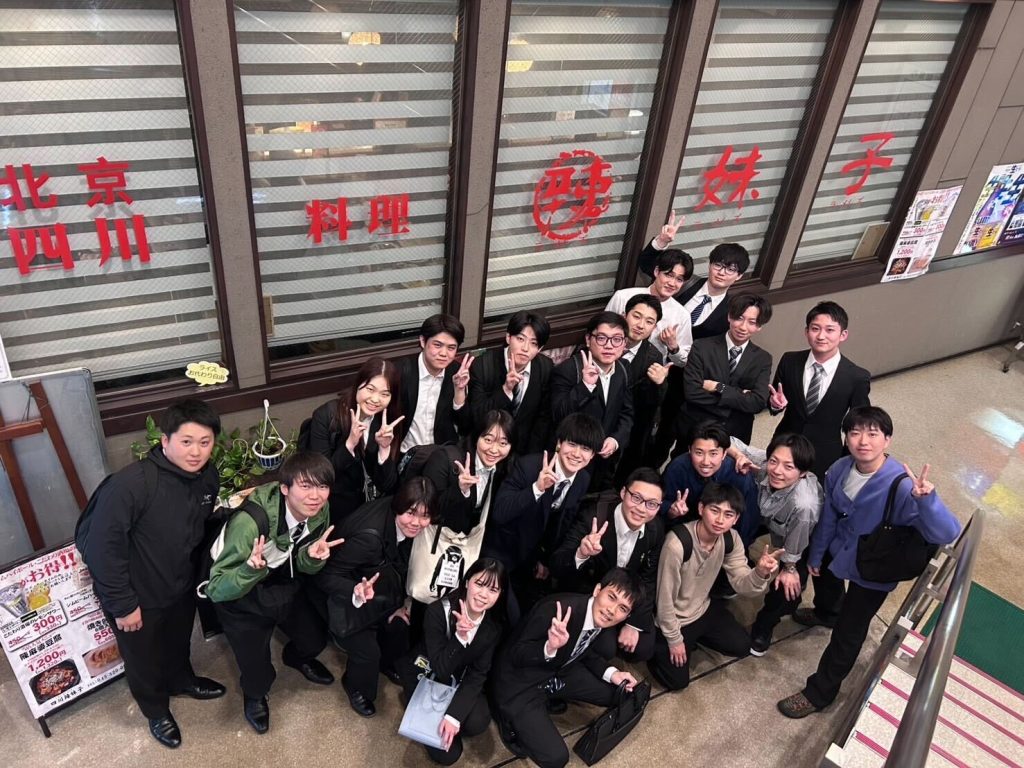
Finally, this conference was my first time participating, and I have learned a great deal and gained invaluable experience. I am truly grateful for having had such a wonderful opportunity. Thank you very much.
Shinichi Tanaka(D2)
It was my third time attending the conference of the Japan Society of Medical Physics since I changed my major from pathology to medical physics last year.
This conference included English-driven sessions called the 4th International Conference on Radiological Physics and Technology (ICRPT). I made a presentation in ICRPT; the title was ‘Improvement of Normalisation of MRI to Estimate Pathological Grade of Prostate Cancer by Local Radiomics’. I attended and asked some questions in other sessions as well, such as image informatics.
One of the most interesting presentations was made by K. Takida from Kyushu University, discussing the analysis of MRI for patients with breast cancer after chemotherapy. I believe that his basic approach can be applied to prophesy whether the radiotherapy is effective on the certain patient; I say ‘prophesy’ instead of ‘predict’ for a certain intention.
I noticed that they have a tendency not to ask questions in ICRPT, probably because speaking English is a kind of barrier in communication, unfortunately. In particular, very few, if any, students asked a question.
I understand that asking questions requires a lot of courage for most students. It is natural to be afraid of asking wrong questions. Nevertheless, you may be praised for asking something even if it was not a good question, whereas nobody can be commended for being silent for fear of failure.
When you attend a conference, I recommend you to ask any question at least once per conference. That kind of action by young students supports science, improves technologies, and leads human beings to prosperity.
